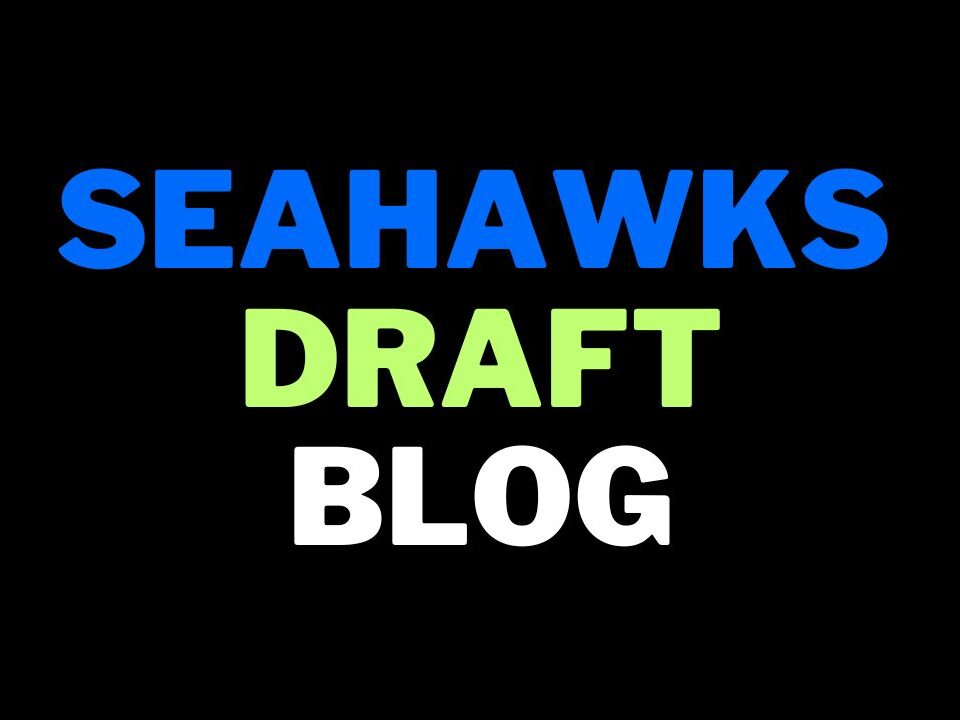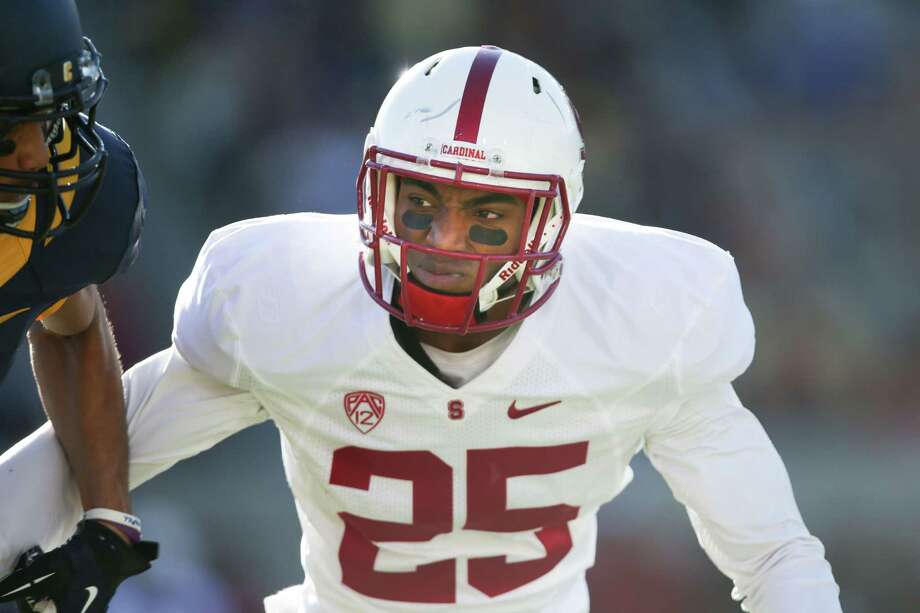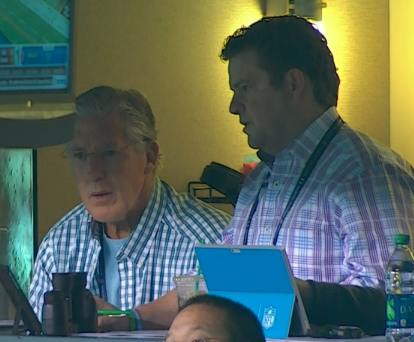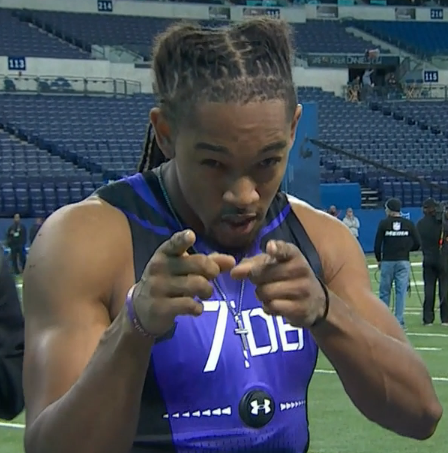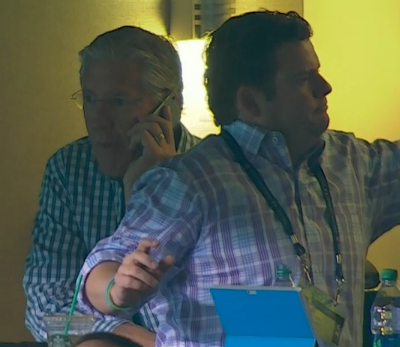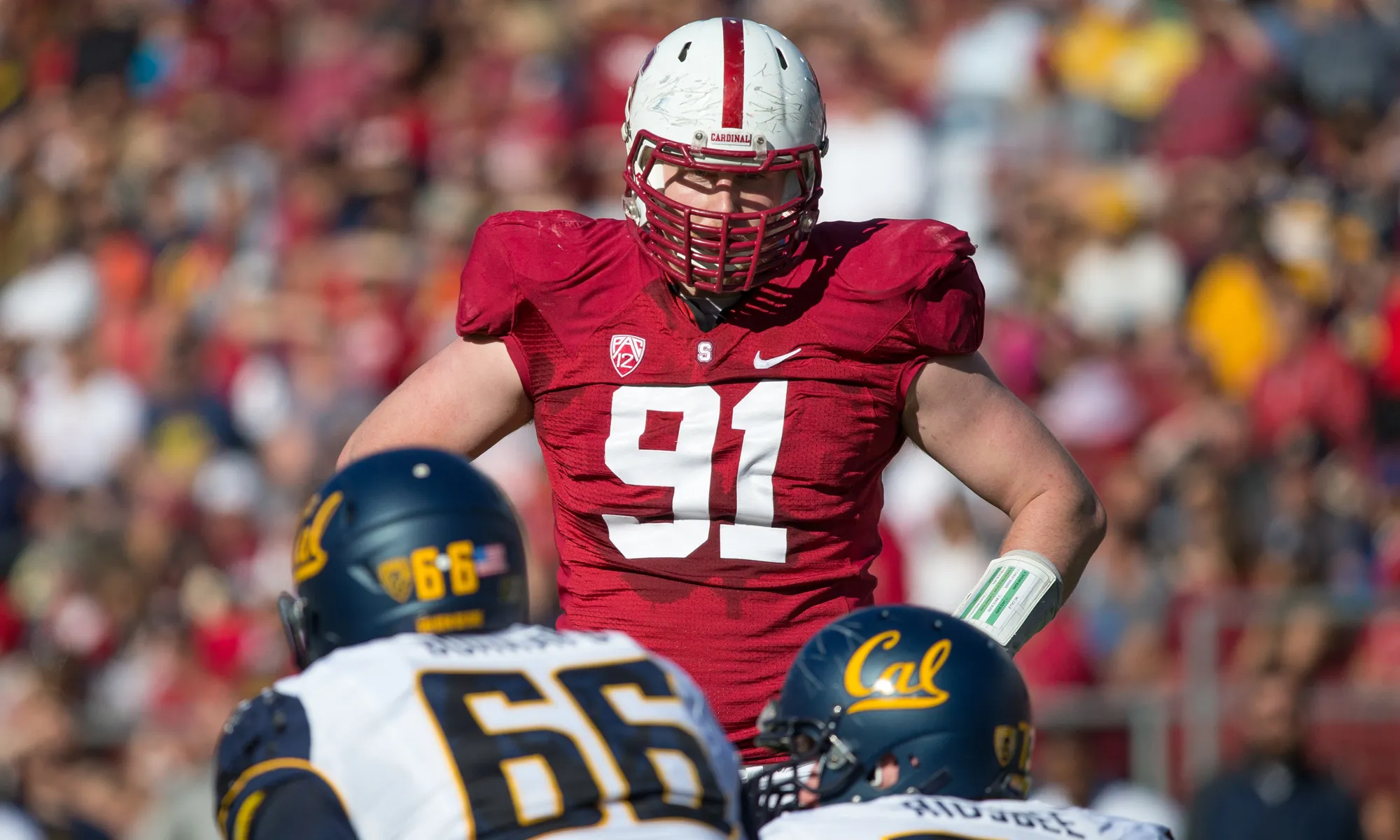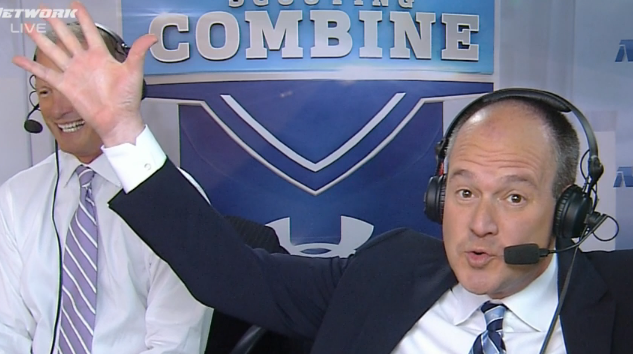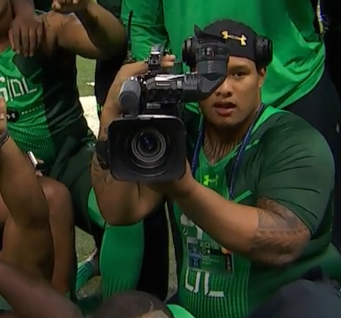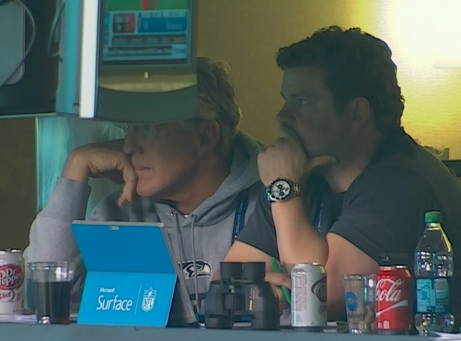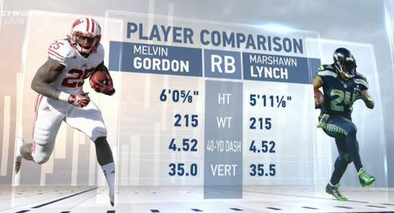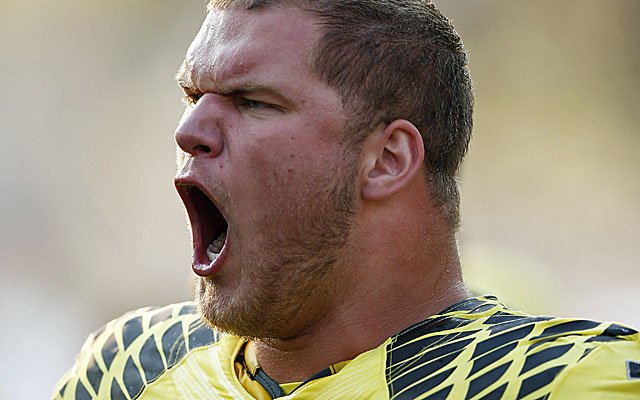
Stanford’s Henry Anderson could be a target for the Seahawks
I put out an updated mock draft yesterday — but to be honest, I have very little faith in it. I think they’re going to trade down from #31.
The Seahawks manipulated the board in 2014 accumulating picks along the way. It seems they always intended to draft Paul Richardson with that first pick and knew the range they could move into to get him. I suspect the plan to draft Richardson was as much to do with trading down (and getting a guy they liked) as it was to draft any particular prospect with that top pick. Why? Because their main intention in round one last year was to use the #32 selection to make sure they got more picks for other targeted players later on.
Seattle traded down twice — acquiring an extra fourth rounder from Minnesota and a seventh from Detroit. They also swapped a fifth for a fourth with the Lions. That deal essentially allowed them to take Cassius Marsh, Kevin Norwood and Kevin Pierre-Louis in the same round. A calculated move — because all three screamed ‘Seahawks’ pre-draft. This wasn’t done on a whim. And you can’t draft all three without the carefully orchestrated trades.
I’m not sure Marsh or Norwood necessarily go in the fourth round unless Seattle takes them. They made sure they got the guys they liked. There are other examples. They knew at #64 they had to take a tackle or risk missing out altogether (they had no third round pick because of the Percy Harvin trade). So they took Justin Britt — a move that, in fairness, seemed like quite a reach.
Garrett Scott provided a physical upside at tackle (a SPARQ demon) in round six. Eric Pinkins was a total unknown, but also a total fit for what they look for in a defensive back. Does Jimmy Stated get drafted if the Seahawks don’t pick him in round five? Moves to get physical ideals onto the roster or obtain players they’d struggle to attract in UDFA.
There weren’t a lot of ‘big names’ on the 2014 list of draftees. There were a lot of players that made you say, “of course!” right after the pick when you looked at the measurables.
I suspect we’ll see something similar again this year. It’ll be a combination of hitting certain positional needs (and possibly reaching a little) in targeted rounds and selecting physical/character fits in other spots.
There’s every chance they’ll trade down again from the #31 pick to give themselves a chance to draft more of their ‘target list’. We get caught up names, we see players we like. The reality is there’s probably only 15-20 players in this draft that the teams will grade in the first round. Which means the player taken at #22 (for example) might not be graded that much higher than the player graded at #35. So if you’re John Schneider picking at #31, the motivation is there to move down.
Another lesson from last year — don’t overrate the combine too much. I think I’m already guilty of that, as I’ll explain in a moment. Donte Moncrief’s workout in Indianapolis a year ago was exceptional. Most people believed he’d be a third rounder before the 2014 combine. With a perfect blend of size, speed and vertical leaping ability — you had to mark him up. You go back to the tape and watch with a positive eye and you see what you want to see. I mocked him in the first round on more than one occasion, eventually settling on a second round grade. He went in the third — the original mark everyone expected.
It’s easy to sit here today and wonder if Tre McBride will go in the second (as I have) or whether Darren Waller with his Vincent Jackson physical comparison will get pumped up the board (guilty, again). It might happen, but is it more likely both players will settle into rounds 3-6? If they like either player enough they might be willing to go a round early. But that’s a big if. Just because they each had a good combine doesn’t mean they’re going to sky rocket into round two or higher.
So while we sit here and wonder what Seattle might do at #31 — it’s probably more worthwhile to simply identify a group of players that could be taken at any point. Prospects Seattle might like and will work out a way to collect.
Receiver might even be a position they’re willing to wait on. If they’re able to pull off a move for a free agent like Julius Thomas — they’ll be adding that elusive dynamic, tall receiving threat to the team. A guy who can work the middle, create a mismatch wherever he lines up, produce in the red zone and convert third downs.
If you sign Thomas as a free agent, you can afford to wait on ‘your guys’ because you’ve added the missing piece to the offense. And you can perhaps afford to develop McBride and Waller (if they’re on your target list) over time. It took V-Jax four years to post a 1000 yard season in San Diego.
They could take two receivers (Pete Carroll and Schneider looked particularly busy in their booth during the WR forty yard dash runs), two corners, two offensive linemen, a linebacker, a safety, a running back and a couple of defensive linemen. That’s a pure guess. The tight end class offered very little to get excited about — and if you sign Julius Thomas (or Jordan Cameron) it’s much less of a need.
Of course, if you’re trying to manipulate the board — you also might trade up for a certain player. They did it for Tharold Simon in 2013. I think it’s unlikely in round one, but certainly is a possibility from the #63 pick onwards.
Players they might manipulate the board to target:
Henry Anderson (DT, Stanford)
Similar size to Tony McDaniel at 6-6 and 294lbs — 33 1/2 inch arms. Ran a 5.03 with an impressive 1.63 ten yard split. He aced the short shuttle with a 4.19 — quickest among defensive linemen. Anderson performed very well at the Senior Bowl. Can play the five technique or work inside. Typical Stanford lineman, great attitude. He’s projecting in rounds 3-4.
Alex Carter (CB, Stanford)
One of the few corners in this class to tick the right boxes for Seattle. He’s 6-0, 196lbs with 32 1/8 inch arms (the Seahawks have not drafted a corner with sub-32 inch arms). He ran a 4.51 (Richard Sherman ran a 4.56). He tested well in the short shuttle and posted a 10’1″ in the broad jump. According to reports he aced interviews at the combine. He’s projecting in rounds 4-5 but might need to be taken earlier due to the weak overall cornerback class.
Ty Sambrailo (T/G, Colorado State)
Active blocker who will be a good fit in a zone scheme. Showed off his movement skills with a terrific 4.58 in the short shuttle (fifth overall among offensive linemen). 6-6 and 311lbs so compares to Carpenter/Britt in terms of size. Short arms so has to play guard. Tony Pauline reported in January that Seattle had interest in Sambrailo. He’s projecting anywhere from rounds 2-4.
Tre McBride (WR, Williams & Mary)
High character receiver. 6-0 and 210lbs with 32 1/8 inch arms. Smallish hands (nine inches) aren’t ideal but they’re bigger than Paul Richardson’s a year ago. Ran a 4.41 with a 1.51 split. Posted a 38 inch vertical and a 4.08 short shuttle. Kick return experience. Plays big on tape — high pointing the football and making contested catches downfield. Sparky on the field and respectful off it. Made ‘wow’ plays even against big school opponents. Recently projecting in rounds 3-4 but rising.
Zack Hodges (DE, Harvard)
Pass rusher with a relentless motor. 6-2 1/2, 250lbs with fantastic length (34 1/2 inch arms). 4.68 forty isn’t ideal for a LEO but a 1.61 split is intriguing. Showed explosiveness in the broad jump (10’5″). Incredible back-story. Lost his mother in high school after losing his father aged six and then his grandfather aged 14. Fought to get to Harvard. Will not quit on or off the field. Touted as a day two pick going into the Senior Bowl, a more modest expectation is mid-to-late round.
Rakeem Nunez-Roches (DT, Southern Miss)
Missed the entire 2013 season with a knee injury but bounced back in 2014 to lead the team in TFL’s (14). Declared early after finding a way to impact games. He’s 6-2 and 307lbs with a shade under 33 inch arms. Ran a 5.02 and posted a nice 34 inch vertical. He could sneak into the later rounds as a priority UDFA. Moved well at the combine.
Rob Crisp (T, NC State)
Handled Vic Beasley better than any tackle in college football last season. Injury history is concerning but he’s 6-7, 301lbs and has 34.5 inch arms. Ran a 5.26 and posted a 32.5 inch vertical (same as T.J. Clemmings). Short shuttle was in the top-eight for offensive linemen at the combine. Could be a steal in the later rounds or UDFA.
Laurence Gibson (T, Virginia Tech)
Only started full-time for the Hokies in 2014 and considered a bit of a surprise invite to the combine in the media. He’s 6-6, 305lbs with vines for arms (35 1/8 inches). Ran an impressive 5.04 forty, posted a 33.5 inch vertical (best among offensive linemen) and a top-five short shuttle. Combine invite hints at respect within scouting circles. Could be a nice later round option ala Garrett Scott a year ago.
Terry Poole (T/G, San Diego State)
Another player linked to the Seahawks by Tony Pauline. Moved well in drills and looks like a big, mobile guard prospect at the next level. 6-5 and 307lbs with a good body shape. Ran a 5.09 forty with a good 1.79 split (Jake Fisher’s split was 1.75). 31 inch vertical and another lineman who put in a good short shuttle. Possible later round ball of clay for Tom Cable.
Kurtis Drummond (S, Michigan State)
Not the fastest (4.68) but showed explosion in the vertical jump (39.5 inches). 6-0 and 208lbs. As good as any safety not named Landon Collins in this mediocre class at the position. Showed genuine range on tape and seen as the organizer within Michigan State’s secondary. Performed well at the Senior Bowl before picking up a slight hamstring strain. Instinctive. Graded in the later rounds — the kind of range Seattle could target a safety.
Nelson Agholor (WR, USC)
Better athlete than people realize — click hear for evidence. Didn’t do the jumps at the combine after dislocating his finger during catching drills. Ran a 4.42 which is quicker than Marqise Lee and Robert Woods. Mr. Reliable for the Trojans. Chose to go to USC specifically to compete with Lee and Woods. Former big-time recruit. Tremendous 1.53 split. 6-0 and 198lbs — but the Seahawks will take receivers in that range. Productive return-man. Could be a top-40 pick.
Darren Waller (WR, Georgia Tech)
Almost identical size, speed, length, jumping ability to Vincent Jackson. It’s quite unbelievable how similar they are physically entering the league. 6-6 and 238lbs and still ran a 4.46. One of only two players in the NCAA not to drop a single catchable pass in 2014. 37 inch vertical with 33 1/4 inch arms — tremendous catching radius. Still growing into his body and production was poor in the triple option (no surprises there). Seen as a tight end project for some teams. Has the upside to go day two, more likely a day three selection.
Josh Shaw (S, USC)
The guy who lied about saving his drowning nephew. He doesn’t have the length to play corner in Seattle (6-0 but only 30 3/4 inch arms) but he could be a mobile safety project. He ran a 4.44 forty at 201lbs, jumped 37.5 inches in the vertical and 10’10” in the broad. Will go in the tail end of the draft if not UDFA.
Adrian Amos (CB, Penn State)
Is he a corner or a safety? He has the size, length and speed to play corner in Seattle (6-0, 32 1/4 inch arms, 4.56 forty). He is 218lbs though and that’s big. Jumped a 35.5 inch vertical and a 10’2″ broad jump. Passionate about the game. Apparently the Seahawks contacted his old High School coach to ask about him. This has legs it seems. Graded mainly in rounds 4-5 it seems.
Mitch Morse (T, Missouri)
6-5, 305lbs lineman with guard length (32 1/4 inch arms). Ran a 5.14 but more impressively posted the third best short shuttle (4.50) among linemen. Would be a later round guard project for Tom Cable. Missed the Senior Bowl after undergoing surgery on his index finger. Replaced Justin Britt at left tackle for the Tigers but also has experience at center.
Tony Lippett (Michigan State) & Nick Marshall (Auburn)
I’m listing both players together for a reason. I highly doubt Seattle drafts either to play receiver (Lippett) or quarterback (Marshall). But both players could be converted to cornerback. Marshall worked out at corner during the Senior Bowl. Lippett is 6-2 1/2 and 192lbs with nearly 33 inch arms. He ran a 4.61 with a 36 inch vertical. Marshall is 6-1 and 207lbs with 32 1/8 inch arms. He ran a 4.54 and posted a 37.5 inch vertical.
Chris Conley (WR, Georgia)
The combine freak of the year until Byron Jones showed up. On tape he actually makes some nice plays — but he clearly lacks refinement. Seemed to be one of the players leading the way at Georgia. He’s nearly 6-2, 213lbs with just under 34 inch arms and ten inch hands. He ran a 4.35, benched 18 reps, posted an insane 45 inch vertical and an 11’7″ on the broad jump. Going into the combine he wasn’t on anyone’s radar. Now? You wonder if he’ll be over-drafted.
Cameron Erving (G/C, Florida State)
Intelligent, edgy player and a converted defensive lineman (like J.R. Sweezy). Had a year and a bit at tackle before moving inside to center. Unlikely to go back to tackle but can easily cover three spots in the interior. 6-5 and 313lbs with 34 1/8 inch arms and ran a 5.15 in the forty. Managed 30 reps on the bench press, a 30.5 inch vertical and a 9’4″ in the broad jump (top five among offensive linemen). Also had an excellent three cone (7.48) and short shuttle (4.63). Would start at left guard you’d imagine. Expected to go in the top-50.
Eric Rowe (CB, Utah)
How long are his arms and how much does it matter? At the Senior Bowl he was measured with 32.5 inch arms. At the combine? 31.5 inches. Again, the time Seattle drafts a corner with sub-32 inch arms will be the first. Wingspan also matters — Rowe isn’t short or small (6-0, 205lbs). Another prospect who could play corner or safety. Ran a 4.45, jumped 39.5 inches in the vertical and 10’5″ in the broad. Originally considered a round 4-5 type prospect, Rowe’s impressive combine could lead to a rise.
Davis Tull (LB, Tenn-Chatt)
It’s a bad class of linebackers but this guy is athletic enough to warrant later round or UDFA consideration. He’s 6-2 and 246lbs, jumped a 42.5 inch vertical and posted an 11 in the broad. He played defensive end in college but should convert to the SAM linebacker spot at the next level. Didn’t run the forty at the combine due to injury.
Jake Fisher (T, Oregon)
Converted tight end who lit up the combine last Friday. 6-6 and 306lbs but ran a 5.01, recorded a 32.5 inch vertical, posted incredible three-cone (7.25) and short shuttle (4.33) times. Had a 1.75 ten yard split. Arm length a shade under 34 inches. Tape isn’t as good as Joel Bitonio’s but they’re similar athletes. Could play guard or tackle. Following his workout in Indianapolis it’s probably #31 or bust if you want Fisher.
Buck Allen (RB, USC)
Cut-and-run specialist who had the best ten yard split among running backs at the combine (1.58). Ran a 4.53 at 6-0 221lbs. Doesn’t come close to the raw athleticism Christine Michael showed in 2013 but he’s a more technically sound runner. Only managed 11 reps on the bench press. Had a 10’1″ in the broad jump (top-five for running backs).
Kenny Bell (WR, Nebraska)
Ran faster than people expected (4.42) and also had a 41.5 inch vertical and a 10’9″ in the broad jump. Probably the best run blocking receiver in the draft. That won’t be reason enough to draft him, but the physical upside could make the entire package intriguing as a day three project. He’s 6-1 and 197lbs. He only had seven reps on the bench press with 31 5/8 inch arms.
Players not included because they’re unlikely to be available to Seattle: Eli Harold (DE, Virginia), Byron Jones (CB, Connecticut), Jalen Collins (CB, LSU), Jaelen Strong (WR, Arizona State), Ereck Flowers (T, Miami).
Getting a player like Cameron Erving at #31 (as projected yesterday) is all well and good, but the Seahawks might prefer to get as many players on a list similar to the one above versus just drafting one big name at #31. Especially if they are able to make a splash in free agency — beginning March 10th.
